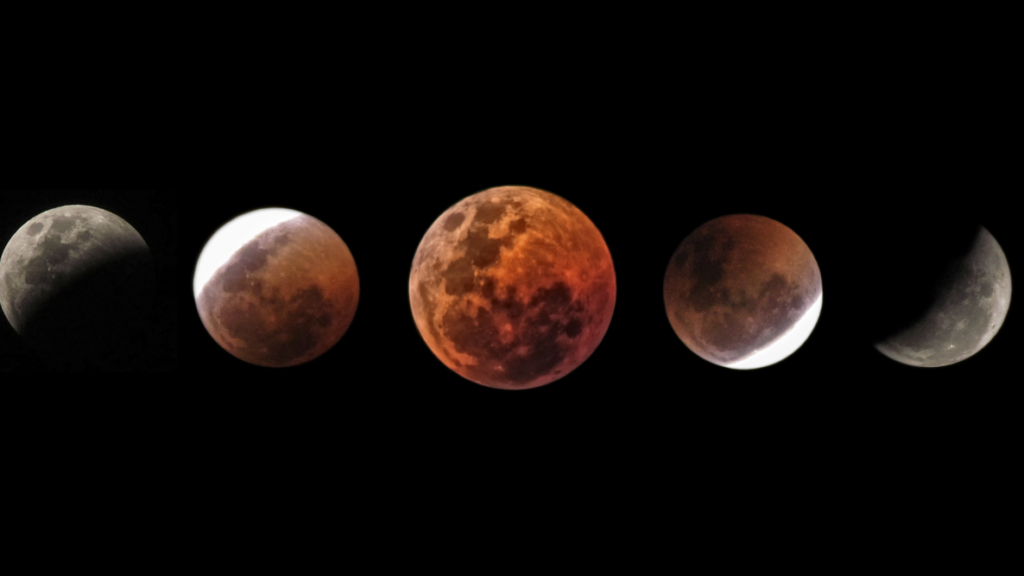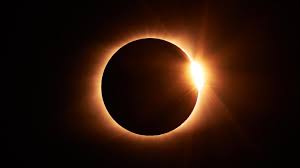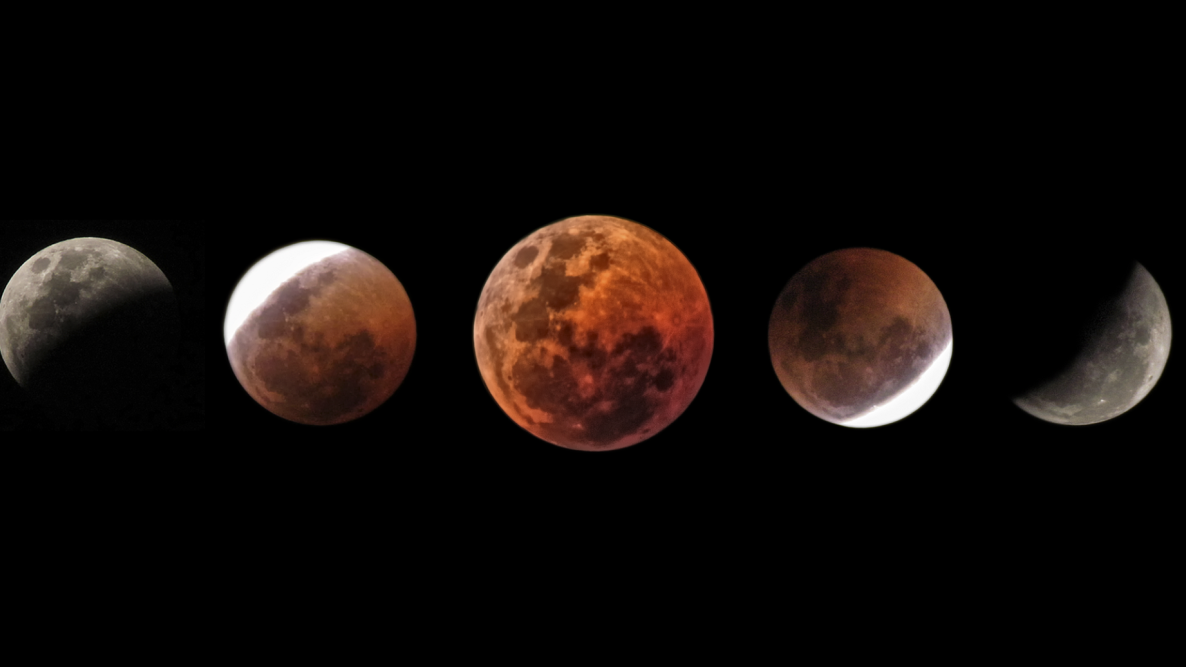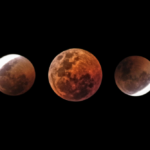What is a Solar Eclipse?
A solar eclipse is a natural phenomenon that occurs when the Moon passes between the Sun and the Earth. Blocking the Sun’s light and creating a shadow on the Earth’s surface. During a solar eclipse, the Moon appears to cover the Sun, casting a dark shadow on the Earth and causing the sky to become noticeably darker.
Solar eclipses occur only during a new Moon when the Moon is directly between the Sun and the Earth. The alignment of the Sun, Moon, and Earth has to be precise for a solar eclipse to occur. This alignment happens only a few times a year.
There are different types of solar eclipses, depending on the position of the Moon and its distance from the Earth. If the Moon completely covers the Sun, it creates a total solar eclipse. Which is only visible from a narrow path on the Earth’s surface. If the Moon only partially covers the Sun, it creates a partial solar eclipse. Which is visible from a broader region. In an annular solar eclipse, the Moon is farther away from the Earth and appears smaller than the Sun in the sky, creating a ring of light around the dark disk of the Moon.
Solar eclipses have been studied and observed by humans for thousands of years, and they continue to fascinate scientists and enthusiasts alike. They offer a unique opportunity to study the Sun’s corona, or outer atmosphere, and the effects of the Sun’s radiation on the Earth’s atmosphere. Solar eclipses can also have cultural and spiritual significance for many societies. They have inspired myths, legends, and artistic representations throughout history.

When Solar Eclipse Happens Worldwide — Timeline
The eclipse starts in one area and ends in another. The time chart given below is the actual times the eclipse occurred.
| Event | UTC Time | Time in Sahiwal |
|---|---|---|
| The first location to see the partial eclipse begin | 20 Apr, 01:34:26 | 20 Apr, 06:34:26 |
| The first location to see the full eclipse begin | 20 Apr, 02:37:08 | 20 Apr, 07:37:08 |
| Maximum Eclipse | 20 Apr, 04:16:53 | 20 Apr, 09:16:53 |
| Last location to see the full eclipse end | 20 Apr, 05:56:43 | 20 Apr, 10:56:43 |
| Last location to see the partial eclipse end | 20 Apr, 06:59:22 | 20 Apr, 11:59:22 |
How Many People Can Face the Eclipse 2024?
| Number of People | Number of People | Fraction of Population around the word |
|---|---|---|
| Any part of the eclipse | 693,000,000 | 8.77% |
| 10% partial | 411,000,000 | 5.20% |
| 20% of partial | 358,000,000 | 4.54% |
| 30% partial | 296,000,000 | 3.76% |
| 40% partial | 222,000,000 | 2.82% |
| 50% partial | 144,000,000 | 1.83% |
| 60% partial | 69,200,000 | 0.88% |
| 70% partial | 40,900,000 | 0.52% |
| 80% partial | 18,500,000 | 0.23% |
| 90% partial | 9,580,000 | 0.12% |
| T annularity | 375,000 | 0.004% |
Types of Eclipses
There are three main types of eclipses: solar eclipses, lunar eclipses, and annular eclipses. Each type of eclipse occurs when the alignment of the Sun, Moon, and Earth creates a shadow on one of these celestial bodies.
A solar eclipse occurs when the Moon passes between the Sun and the Earth, blocking the Sun’s light and casting a shadow on the Earth’s surface. If the Moon completely covers the Sun, it creates a total solar eclipse, which is only visible from a narrow path on the Earth’s surface. If the Moon only partially covers the Sun, it creates a partial solar eclipse, which is visible from a broader region.
A lunar eclipse occurs when the Earth passes between the Sun and the Moon, casting a shadow on the Moon’s surface. This happens only during a full Moon when the Moon is on the opposite side of the Earth from the Sun. If the Moon passes through the Earth’s umbra or dark central shadow, it creates a total lunar eclipse, which can be seen from anywhere on the Earth where the Moon is visible. If the Moon only passes through the Earth’s penumbra or lighter outer shadow, it creates a penumbral lunar eclipse, which is usually fainter and less noticeable.
An annular eclipse occurs when the Moon is farther away from the Earth in its elliptical orbit, making it appear smaller than the Sun in the sky. When the Moon passes directly in front of the Sun, it creates a ring of light around the dark disk of the Moon, known as an annulus. This type of eclipse is called an annular eclipse, from the Latin word for the ring. Annular eclipses are similar to total solar eclipses in terms of their alignment, but they appear different in shape and visibility.
Solar Eclipse 2024
Witness the Rare Solar Eclipse of 2024 in Pakistan

Are you ready to witness a rare celestial event that will leave you in awe? Pakistan is set to experience a solar eclipse on April 20, 2024, which will be visible in several parts of the country. This rare phenomenon, known as a total solar eclipse, occurs when the Moon passes between the Sun and the Earth, casting a shadow on the Earth’s surface.
When and Where to Watch the Solar Eclipse

The solar eclipse will start at around 11:30 am local time and last for almost three hours, with the peak of the eclipse occurring at around 1:00 pm. The path of totality, where the Sun will be completely covered by the Moon, will pass over the northern regions of Pakistan, including Gilgit-Baltistan and Skardu, and also parts of Ladakh and Tibet.
If you want to witness this spectacular event, you need to be in the right place at the right time. The best locations to watch the solar eclipse are those that are in the path of totality. Where the sky will darken and the temperature will drop. You can also use special solar viewing glasses or filters to protect your eyes from the harmful effects of the Sun’s rays.
Solar Eclipse 2024 in Pakistan
A Rare Hybrid Eclipse that Will Leave You in Awe
Are you ready to witness one of the rarest astronomical events in Pakistan’s history? On October 14, 2024, Pakistan will witness a spectacular hybrid solar eclipse, a phenomenon that occurs when the moon partially blocks the sun, casting a shadow on the Earth’s surface. This once-in-a-lifetime event will be visible in parts of Pakistan, including Karachi, Islamabad, Lahore, and other cities. It will begin at sunrise and last for a few hours, providing an awe-inspiring sight that you do not want to miss.
What is a hybrid solar eclipse?
A hybrid solar eclipse is a rare phenomenon that occurs when the moon partially covers the sun, creating a ring of fire around the moon’s silhouette. This phenomenon happens when the moon is closer to the Earth than usual, making it appear larger than the sun, leading to perfect alignment.
Where and when can you witness the hybrid solar eclipse in Pakistan?
The hybrid solar eclipse will be visible in parts of Pakistan on October 2024, starting at sunrise and lasting for several hours. The best places to witness this rare event are Karachi, Islamabad, Lahore, and other cities with clear skies. The eclipse will start as an annular eclipse, where the moon will partially cover the sun, creating a ring of fire around the moon’s silhouette. As the eclipse progresses, it will turn into a total solar eclipse, where the moon will completely cover the sun, creating a stunning view of the sun’s corona.
How to safely witness the hybrid solar eclipse
While witnessing a solar eclipse can be an exhilarating experience, it is essential to take necessary precautions to avoid any harm to your eyes. Looking directly at the sun during the eclipse can cause severe damage to your eyes, including permanent blindness. To safely witness the solar eclipse, you can use special solar filters or eclipse glasses that can protect your eyes from the harmful effects of the sun’s rays. Alternatively, you can use a pinhole projector or a telescope with a solar filter to observe the eclipse safely.
Why This Solar Eclipse Is Special
Solar eclipses are not uncommon, but a total solar eclipse is a rare occurrence that happens only once every few years in different parts of the world. The last time Pakistan witnessed a total solar eclipse was in 1995, and the next one will not happen until 2061. This makes the 2024 solar eclipse a unique and exciting event for astronomers, scientists, and skywatchers alike.
Apart from its rarity, the solar eclipse also has significant scientific value. It allows scientists to study the Sun’s corona, the outermost layer of its atmosphere, which is usually invisible to the naked eye. By observing the corona during a solar eclipse, scientists can learn more about the Sun’s magnetic field, solar wind, and other phenomena that affect our planet.
How to Prepare for the Solar Eclipse
If you plan to watch the solar eclipse, there are some important things to keep in mind. First and foremost, never look directly at the Sun without proper protection, as this can cause permanent eye damage or blindness. Use solar viewing glasses or filters that meet international safety standards and have not expired or been damaged.
Secondly, plan your viewing location and time in advance, as some places may have limited visibility due to weather conditions or other factors. You can also join organized events or groups that offer safe and guided viewing opportunities, as well as educational resources and activities for all ages.
Lastly, don’t forget to capture the moment and share your experience with others. You can take photos or videos of the solar eclipse using a camera or smartphone, but make sure to use proper solar filters and avoid looking at the Sun through the viewfinder or screen.
The different phases of the solar eclipse will occur
- Eclipse begins at 6:34 am PST
- The total eclipse will occur at 7:37 am PST
- The eclipse will peak at 9:17 am PST
- Ends at 11:59 am PST
Lunar Eclipses 2023 in Pakistan

There will be several lunar eclipses visible in 2023, offering skywatchers around the world a chance to witness this fascinating celestial event.
The first lunar eclipse of the year will occur on May 16th, 2023, and it will be a total lunar eclipse. During a total lunar eclipse, the Earth passes between the Sun and the Moon, casting a shadow on the Moon’s surface and causing it to appear reddish. This is sometimes called a “blood moon” due to its reddish hue. The May 16th lunar eclipse will be visible from much of the western hemisphere, including North and South America, as well as parts of Europe, Africa, and Asia.
The second lunar eclipse of 2023 will occur on November 8th, and it will be a partial lunar eclipse. During a partial lunar eclipse, only a part of the Moon passes through the Earth’s shadow, so it appears only partially darkened. The November 8th lunar eclipse will be visible from parts of North America, South America, and East Asia.
Lunar eclipses are safe to observe with the naked eye, unlike solar eclipses which require special protective equipment to avoid eye damage. They are also relatively common, occurring several times a year on average. Nevertheless, they remain a thrilling and captivating event for astronomers, skywatchers, and anyone with an interest in the wonders of the universe.
NASA Map Details 2023 and 2024 About Solar Eclipses in the US
NASA has recently released a new map detailing the solar eclipses that will be visible in the United States in 2023 and 2024. The map shows the path of totality for both eclipses, which is the area where the total solar eclipse will be visible.
The first eclipse, which will occur on March 30th, 2023, will be visible from parts of the western United States, including Oregon, Idaho, Montana, and Wyoming. The path of totality for this eclipse will also pass over parts of Canada and Mexico.
The second eclipse, which will occur on April 8th, 2024, will be visible from the eastern United States, including Maine, New York, and Florida. The path of totality for this eclipse will also pass over parts of Mexico and Canada.
Both eclipses are expected to be major astronomical events, drawing in thousands of people to witness the rare phenomenon of a total solar eclipse. As always, it’s essential to take proper precautions when viewing solar eclipses to protect your eyes from damage. NASA advises that you should never look directly at the Sun during a solar eclipse without good eye protection.
FAQs About Eclaps
Q1: How many eclipses are there in 2024 in Pakistan?
Ans: There will be four eclipses, two lunar and two solars during the year 2024.
Q2: How many eclipses are there in 2024 in the USA?
In 2024, there will be a total of two eclipses visible in the USA. The first eclipse will be a total lunar eclipse on May 16th, 2024, which will be visible from much of the western hemisphere, including North and South America. The second eclipse will be a partial lunar eclipse on November 8th, which will be visible from parts of North America, along with South America and East Asia. However, there will not be any solar eclipses visible from the USA in 2024.
Where will you be for the 2024 solar eclipses in the United States?
The first eclipse on March 30th, 2024 will be visible from parts of the western United States, including Oregon, Idaho, Montana, and Wyoming. The second eclipse on April 8th, 2024 will be visible from the eastern United States, including Maine, New York, and Florida.
Suraj Grahan In Pakistan 2024 Date And Time?
| Date | Time | Duration |
| April 2024 | Begins : 6:34 Am PSTEnd: 11:59 Am PST |












